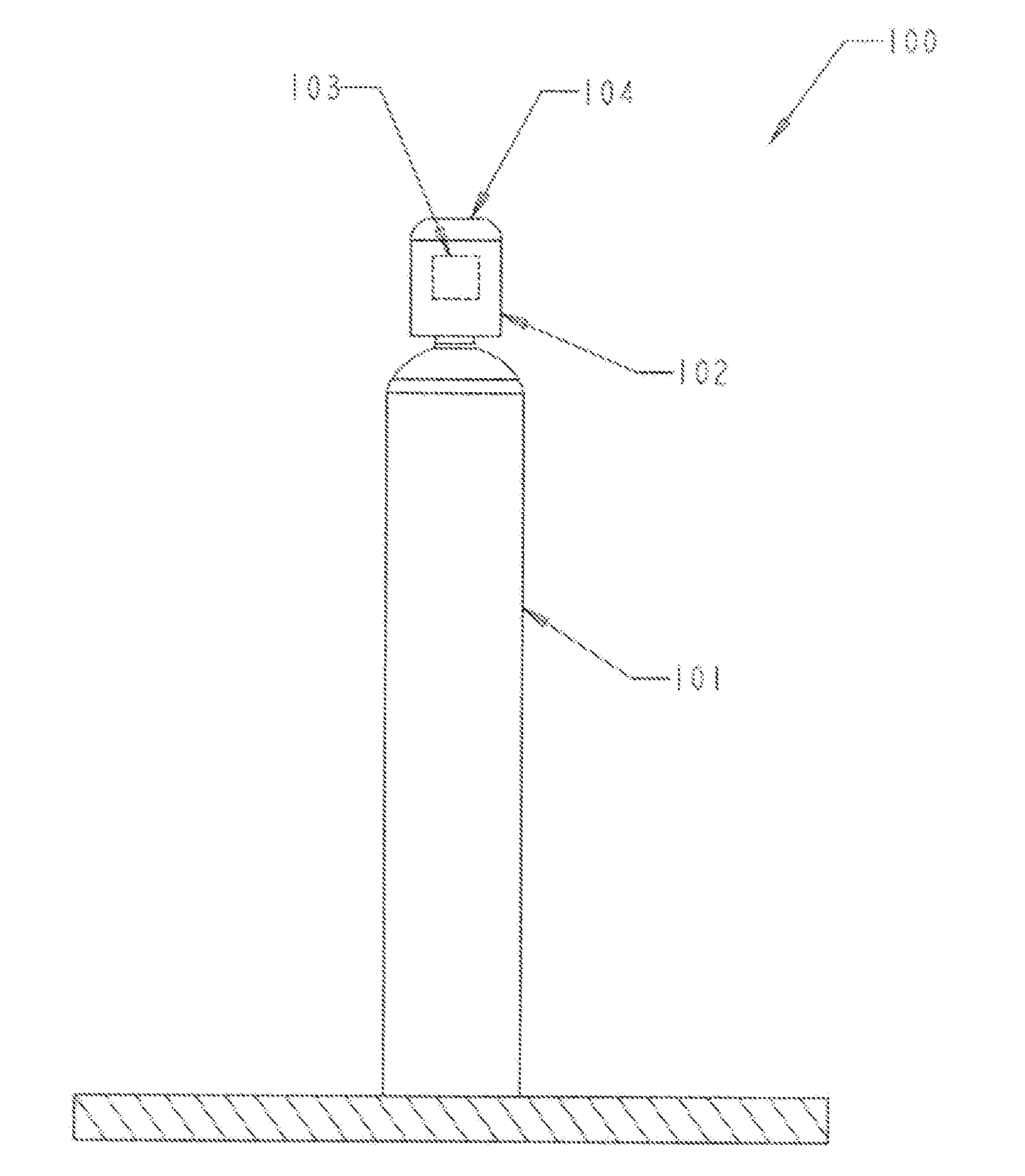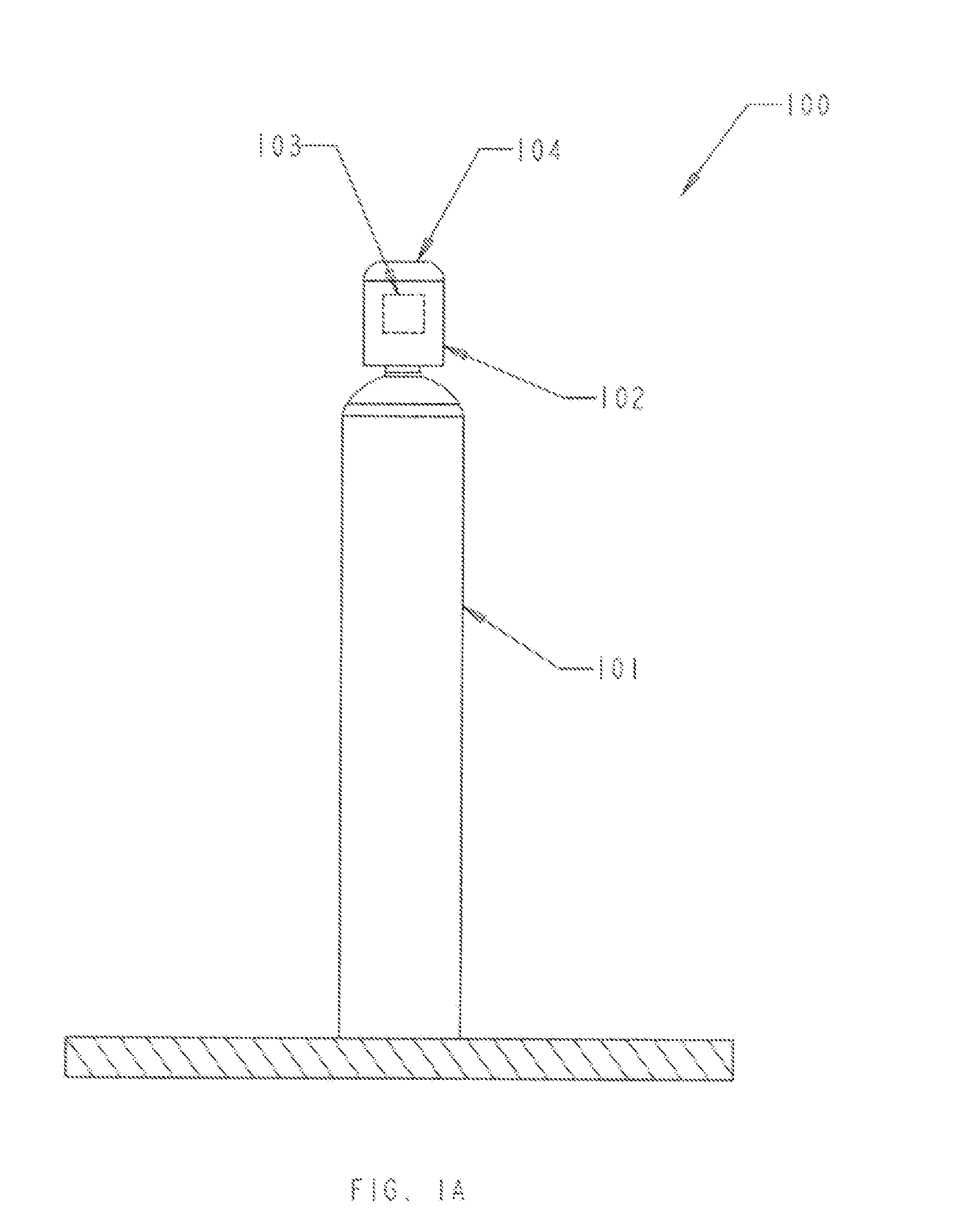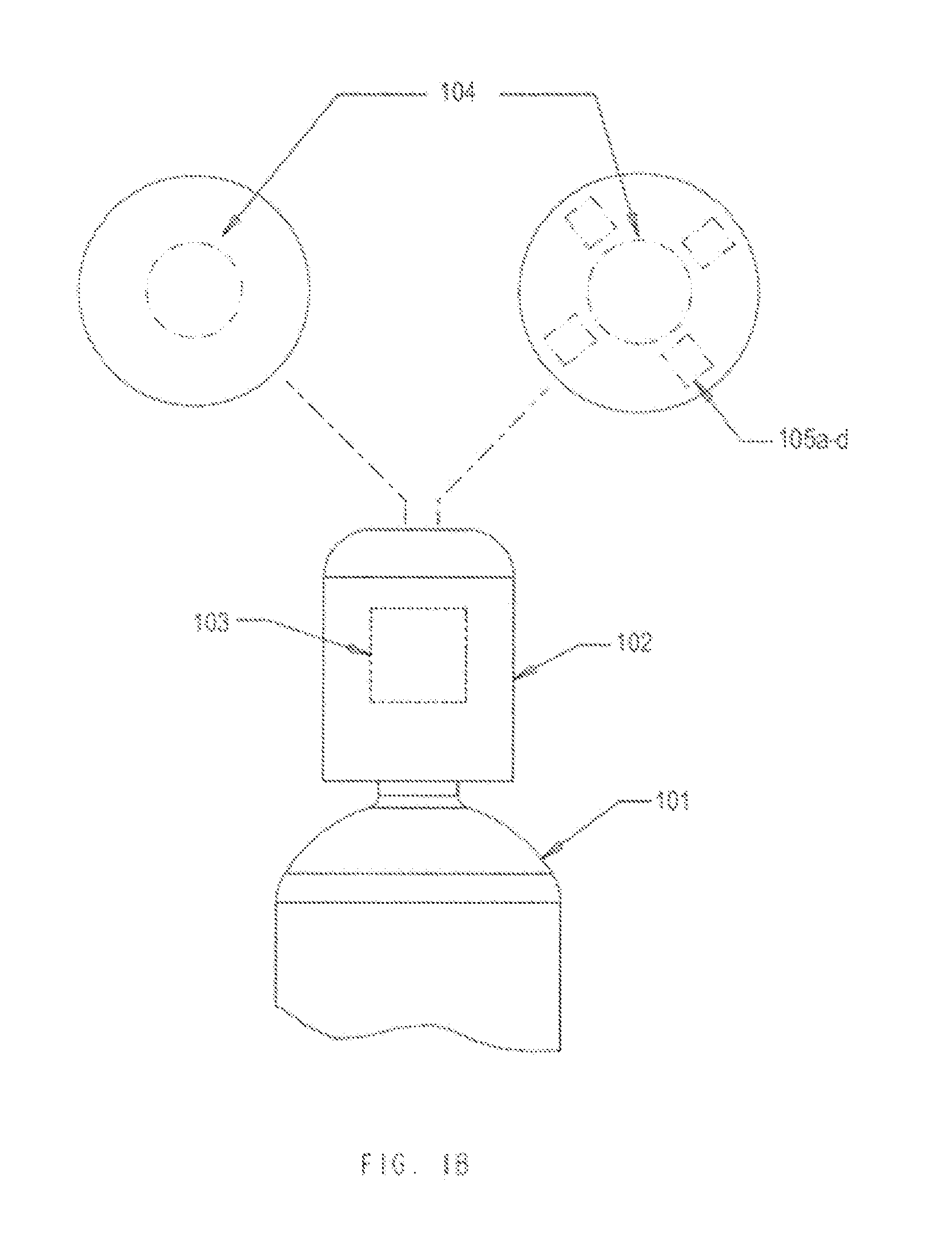Real time tracking and monitoring of gas cylinders
- Summary
- Abstract
- Description
- Claims
- Application Information
AI Technical Summary
Benefits of technology
Problems solved by technology
Method used
Image
Examples
Embodiment Construction
[0031]Through the application of specialized sensor technology and supporting system hardware installed on pressurized gas containers within an active RFID technology environment, the acquisition of gas consumption data (and other gas attributes) can be facilitated and utilized for providing solutions to reducing supply chain management costs associated with purchasing pressurized gas containers including, but not limited to, order processing, delivery, manual labor and the acquisition and storage of gas products. Examples of methods, systems and equipment include:
Exemplary Gas Cylinder Transport Caps
[0032]FIGS. 1A-B show a gas storage and monitoring system 100 that includes a gas cylinder transport cap 102 that is designed to maintain steady-state RFID signal propagation from an integrated RFID device 103 located inside cap 102 when it is secured to the top of gas cylinder 101. As shown in FIG. 1B, the top of the transport cap 104 may include one or more openings that reduce electr...
PUM
 Login to View More
Login to View More Abstract
Description
Claims
Application Information
 Login to View More
Login to View More - R&D
- Intellectual Property
- Life Sciences
- Materials
- Tech Scout
- Unparalleled Data Quality
- Higher Quality Content
- 60% Fewer Hallucinations
Browse by: Latest US Patents, China's latest patents, Technical Efficacy Thesaurus, Application Domain, Technology Topic, Popular Technical Reports.
© 2025 PatSnap. All rights reserved.Legal|Privacy policy|Modern Slavery Act Transparency Statement|Sitemap|About US| Contact US: help@patsnap.com



